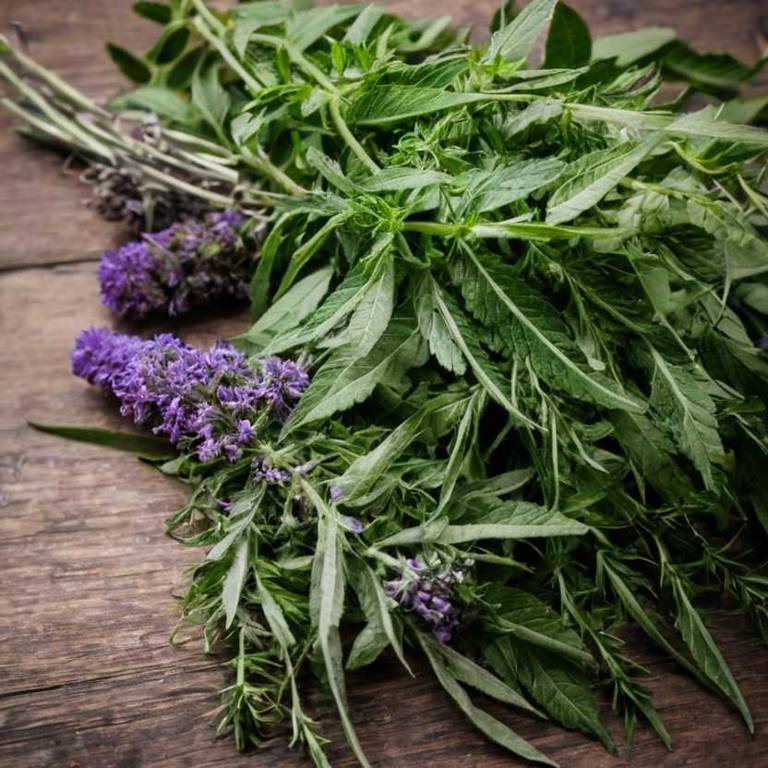By Leen Randell
Updated: Jul 06, 2024
What to know about Buddleja asiatica (chinese orange) before using it medicinally

Buddleja asiatica, commonly known as Chinese Orange, is a herb that has been prized for its numerous health benefits, including its ability to treat fever, rheumatism, and digestive issues.
As a versatile and adaptable plant, it is widely cultivated for its ornamental value, its long, slender branches and vibrant flowers making it a popular choice for gardens and landscapes. From a botanical standpoint, Buddleja asiatica is a member of the Scrophulariaceae family and is characterized by its distinctive trumpet-shaped flowers and grayish-green foliage.
The use of this herb dates back to ancient China, where it was mentioned in the 16th-century herbal text "Bencao Gangmu", a comprehensive guide to traditional Chinese medicine.
This article explains the medicinal, horticultural, botanical, and historical aspects of Buddleja asiatica.
What are the medicinal properties of Buddleja asiatica?
Buddleja asiatica, also known as Chinese orange, helps with treating various health issues, including fever, rheumatism, and digestive problems. Its leaves and flowers are used to make decoctions, infusions, and ointments for medicinal purposes. It is also used as an anti-inflammatory agent.
The active constituents of Buddleja asiatica include flavonoids, phenolic acids, and terpenoids, which are responsible for its medicinal properties. These compounds have been shown to have antioxidant, anti-inflammatory, and antimicrobial effects, making the plant useful for treating various health issues.
The most commonly used parts of the plant for medicinal purposes are the leaves and flowers. The leaves are used to make decoctions, which are used to treat fever, rheumatism, and digestive problems. The flowers are used to make infusions, which are used to treat digestive problems and as a diuretic.
Improper use of Buddleja asiatica can cause side effects such as gastrointestinal upset, allergic reactions, and skin irritation. Its use can also interact with other medications, including blood thinners, diabetes medications, and blood pressure medications.
Precautions when using Buddleja asiatica medicinally include consulting a healthcare professional before use, especially if taking other medications or with underlying health conditions. Pregnant and breastfeeding women should also exercise caution when using the plant.
What are the horticulural aspects of Buddleja asiatica?
Buddleja asiatica, also known as Chinese orange, grow best in well-drained soil and full sun to partial shade. It thrives in temperatures between 64°F to 90°F (18°C to 32°C) and can tolerate drought once established. This deciduous shrub requires minimal maintenance.
Proper planting of Chinese orange involves digging a hole twice as wide as the root ball, mixing in compost or fertilizer, and gently placing the plant. The root flare should be level with the soil surface, and the soil watered thoroughly after planting. Mulch around the base to retain moisture.
To harvest the flowers of Chinese orange, cut the stems just above a leaf node using pruning shears. Cut in the morning, when the plant is fully hydrated. Remove spent flowers to encourage new growth and prevent seed production. Harvest regularly to maintain a continuous display of blooms.
Pests and diseases affecting Chinese orange include aphids, whiteflies, and spider mites, which can be controlled with insecticidal soap or neem oil. Root rot and leaf spot diseases can be caused by overwatering, fungal pathogens, and bacteria. Regular inspection and treatment can prevent the spread of these issues.
What are the botanical aspects of Buddleja asiatica?
Buddleja asiatica, also known as Chinese Orange, is a shrub-like plant that belongs to the Scrophulariaceae family. It has a woody stem, typically 3-6 meters tall, with a greyish-brown bark and a spreading habit. The leaves are elliptical, 5-15 cm long, and have a leathery texture.
Taxonomically, Buddleja asiatica is classified as follows: Kingdom: Plantae, Clade: Angiosperms, Clade: Eudicots, Clade: Asterids, Order: Lamiales, Family: Scrophulariaceae, Genus: Buddleja, Species: B. asiatica. It is a distinct species within the Buddleja genus.
Several cultivars and variants of Buddleja asiatica exist, including 'Nanho Blue', 'Nanho Purple', and 'Nanho White', which differ in their foliage and flower color. Some cultivars also have a more compact growth habit, making them suitable for smaller gardens.
Buddleja asiatica is native to southern China and northern Vietnam, but has been introduced to other parts of Asia and the Americas as an ornamental plant. It grows in a variety of habitats, including woodland edges, scrublands, and along streams.
The life cycle of Buddleja asiatica typically begins in spring, when new growth emerges from the woody stem. The plant blooms from summer to autumn, producing long panicles of small, tubular flowers that attract pollinators. Seeds are produced in autumn, and the plant goes dormant during the winter months.
What are the historical aspects of Buddleja asiatica?
Buddleja asiatica, also known as Chinese Orange, is a plant with a long history of use in traditional medicine, particularly in Chinese and Ayurvedic practices, where it is valued for its anti-inflammatory and antiseptic properties.
In Chinese mythology, the plant is associated with the legend of the Eight Immortals, with the eighth immortal, He Xiangu, often depicted holding a Chinese Orange flower, symbolizing her role as a protector of women and children.
The plant's symbolic meanings include protection, purity, and abundance, reflecting its use in rituals and ceremonies to ward off evil spirits and attract good fortune. In some cultures, it is also a symbol of love and devotion.
In ancient Chinese texts, such as the Materia Medica by Li Shizhen, the plant is described as having a sweet, slightly bitter taste and a medicinal property known as "heat-clearing", which is used to treat fever and heat-related illnesses.
Historical artifacts, such as ancient Chinese ceramics and textiles, feature depictions of the Chinese Orange plant, highlighting its importance in traditional Chinese art and culture. The plant's distinctive flowers and leaves are also mentioned in historical records of Chinese garden design.